We are just over halfway through 2017 and it has been an exciting year for photographers so far, with several high-profile camera, lens and smartphone launches. We have been very busy at DxOMark keeping up with the announcements and putting the new models (and some that were already announced last year) through our test procedures.
We will now go into our “summer break” and not publish any new reviews or articles during August but the team will be working hard behind the scenes to get back to action with new camera test reports and developments in September. IFA in Berlin, the next important trade event, where several new device announcements are expected, is also only a few weeks away. So now seems like a good time to have another look at the most interesting smartphone cameras we have tested over the past months and how they compare to last year’s models and previous generations.
With rapidly improving hardware and intelligent software solutions based on multi-frame processing, mobile is currently one of the main drivers of innovation in imaging. In 2017 we have seen high-profile launches of all major brands, promising better camera performance and image quality than previous device generations could deliver. The table below provides an overview over the camera specifications and scores of the devices we have tested from May to July 2017. Please note that the LG G6 and OnePlus 5 feature a dual-camera setup. Both specifications and scores relate to the main camera only.
Overall results
The graph below shows where those new devices are slotting in in the DxoMark mobile all-time ranking. As you can see, there is some variation in the overall results. The HTC U11 is the clear winner of 2017 so far and with an overall score of 90 just takes the top spot in the DxOMark Mobile ranking from the Google Pixel. The Samsung Galaxy S8 is another 2017 device that performs well but at 88 points cannot improve over its own predecessor from the previous year, the Galaxy S7 Edge.
At 87 and 86 points respectively both the OnePlus 5 and Meizu Pro 6s are putting out good image quality but are performing on the same level as some slightly older models, such as the Sony Xperia Z5 or Samsung Galaxy Note 5. The LG G6 is a little bit of an outlier and with a score of 84 points cannot match its own predecessor, the G5 which achieved 86 points when tested last year. Let’s have a closer look at the break down of these overall results in the following sections.
Photo performance
As you can see in the graph below, in terms of DxoMark Photo Score the situation is very similar to the overall score. The HTC is the current leader in the rankings and the LG G6 is trailing the current crop of high-end devices.
Exposure, color and dynamic range
All of these latest devices deliver good exposure, color and contrast in bright light and low light conditions. Only the Meizu and Galaxy S8 can occasionally struggle with exposure stability in low light and some variation in brightness between shots taken in succession might be visible. In low light the LG, Meizu and OnePlus also can display some signs of color shading – color casts that only affect certain parts of the frame, usually the edges. Overall all cameras in this overview are getting the basics right in most situations, though.
Dynamic range is an area where the differences between the test models become more obvious, as you can see in the sample images below. In this scene most cameras manage to keep highlight clipping in bright parts of the frame well under control, but the Meizu Pro 6s produces noticeably darker shadows than the rest, resulting in lower levels of detail in those areas of the frame.
Out of our candidates the LG G6 is the device which struggles most with dynamic range in bright areas of a scene. In the G6 image of the scene below the sky has taken on a cyan hue and no detail is visible in the clouds as the camera has clipped one or several color channels in the highlights.
Texture and noise
When viewing images on the smartphone screen or any other small display, fine detail and textures are much less important than exposure, dynamic range or color. However, if you like to print your images or view them in full size on a larger screen, the differences between cameras in terms of texture and image noise become very visible.
As you can see in the table below the score for Texture varies from 87 for the LG to 94 for the HTC U11. With a score of 92 the Samsung Galaxy S8 manages noise in its images very well, at 82 points the LG is again trailing the pack.
In the 100% crops below you can see how those numbers translate into real life performance. The HTC finds a very good balance between sharpening and noise reduction and as a result captures very high levels of detail. At the other end of the scale the OnePlus 5 very noticeably smears fine textures. The G6 image shows strong signs of oversharpening.
The 100% magnification also reveals differences in terms of luminance noise in bright light. Some grain is visible in the blue sky in the HTC U11 image but it is very finely grained and hardly noticeable. The G6 image on the other hand produces higher levels of noise with larger grain. Combined with strong levels of sharpening this makes the noise in the blue sky quite intrusive.
Very similar results can be observed in our studio test scene. The HTC U11 delivers very clean skin tones while at the same time capturing good detail in other areas of the frame. The LG G6 image at the other end of the scale shows noticeable sharpened luminance noise in the skin tones of our test target, even at base ISO.
As you would expect, differences in terms of texture and detail are also visible in lower light. Below you can see a crop from our studio chart from images that were captured at a light level of 20 lux.
In these conditions the HTC again produces the best results, closely followed by the Samsung. Despite the dim light both images still show a lot of fine detail and well-defined textures. The other three cameras use noticeably stronger noise reduction which results in a reduction of detail and a smear effect on low-contrast areas of the frame, for example the subject’s skin tones.
At this light level there are also noticeable differences in terms of noise. The HTC and Samsung capture the cleanest skin tones, followed by the Meizu. The OnePlus 5 and LG G6 images show the most visible grain.
Image artifacts
Under certain conditions all the cameras in our comparison can produce a range of image artifacts that could be caused by either sensor, lens or image processing. The good news is that in most cases those artifacts are well controlled and will only be spotted when examining an image at full magnification. Below you can see a few examples of the more intrusive artifacts we have found during our testing.
The OnePlus 5 uses multi-frame algorithms for better detail and lower noise levels. On the downside this technology can produce ghosting artifacts on moving subjects, such as the tree branches in the sample below. We occasionally also saw some ghosting on the HTC U11 but the effect was most intrusive on the OnePlus.
On the Samsung, and many other smartphone cameras, sharpness is reduced when you move from the center of the frame to the edges. In the Galaxy S8 sample shot below you can see that the image is very sharp at the very center of the image. Towards the edge of the frame the lens is capturing softer results.
The Meizu camera struggles with flare when the sun or another strong light source is inside or close to the edge of your frame. As you can see in the left image below the effect can be very distracting. The camera also has a tendency to oversharpen high-contrast edges which can lead to a halo effect, as can be soon on the statue in the right image.
Autofocus performance
With on-sensor phase detection and laser-systems becoming more commonplace autofocus performance has improved a lot over the last couple of device generations and in our test the AF-systems on almost all devices produced sharp and repeatable image results. The LG G6 was the one exception. Below you can see the bright light AF test results for the HTC U11 which very consistently produces sharp images when focusing repeatedly. In comparison, the G6 results are much more unstable and especially in auto mode the G6 regularly triggers the shutter when no good focus has been achieved, resulting in blurry images. The G6 performs better when AF is triggered manually by tapping on the screen, but the differences between shots taken in quick succession are still larger than we would like.
The results look similar in lower light. In these conditions the G6 is actually more stable in its full auto mode than when setting the focus point manually. Again the HTC is much more consistent, though.
Video performance
When looking at video performance in isolation the picture is slightly different to the photo score. HTC U11 and Samsung Galaxy S8 are the best devices in this group in terms of video as well. However, the Meizu has dropped quite a few places back in the ranking while the OnePlus and LG retain their middle-of-the-pack positions.
Like in photo mode all cameras produce good exposure and decent color in video mode most of the time. However, the HTC, Meizu and OnePlus are a little more limited in terms of dynamic range than the LG and Samsung. The Meizu shows some quite noticeable color shading and doesn’t adapt as smoothly to changes in white balance as the other cameras. Its images also show the same strong flare as in stills mode.
In terms of texture and noise the HTC is the best of the bunch, with good detail and low noise levels in bright conditions and low light. At the other end of the scale the OnePlus 5 struggles with fine detail and textures in all light conditions and its video footage shows strong noise when filming low light scenes.
Conclusion
Looking at our test results it’s fair to say 2017 has been a good year for mobile photography so far, with new technologies contributing to better image quality and more consistent and reliable camera performance. With the HTC U11 we have a new leader in the DxOMark Mobile rankings, but with a number of high-profile announcements expected in the next few months and innovative dual-camera and multi-frame technologies becoming more commonplace it’s arguably only a question of time before the HTC will be pushed from the top.
On the other hand, some manufacturers still have work to do. For example, the levels of detail and noise in our test images and videos vary considerably, dynamic range in high-contrast scenes is an issue for some devices and new multi-frame technologies can lead to unwanted ghosting effects.
So, while smartphone cameras are currently as good as never before, there is still quite some room for improvement, some of which we will hopefully see on new devices in the near future. In the meantime, for more detailed image quality analyses, including image samples and detailed flash and autofocus tests, you can have a look at the full DxOMark reviews of the devices covered in this article:
</div


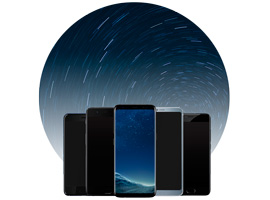
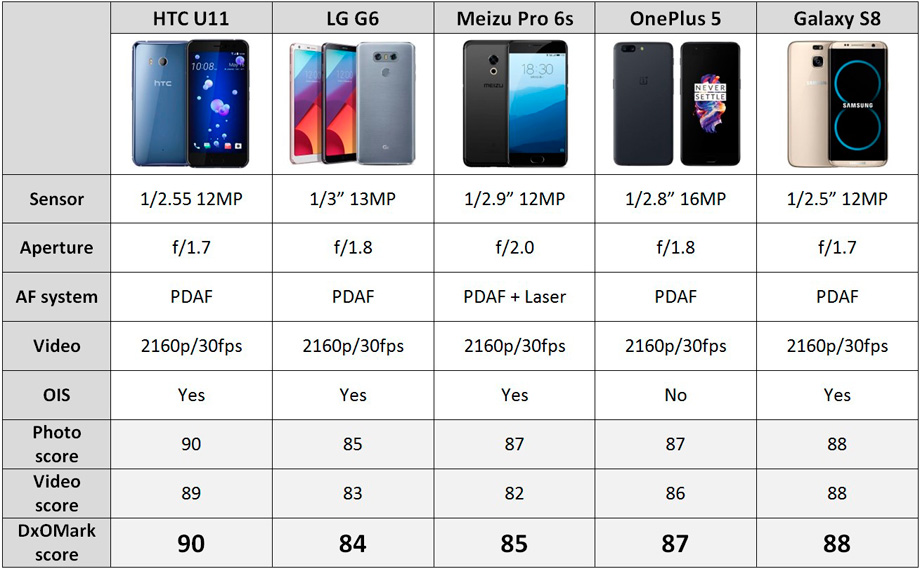
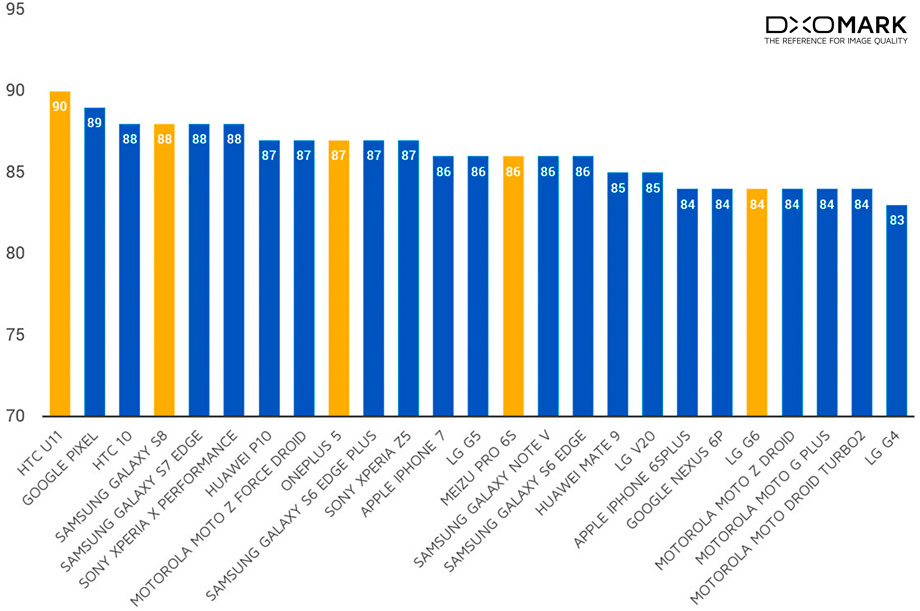

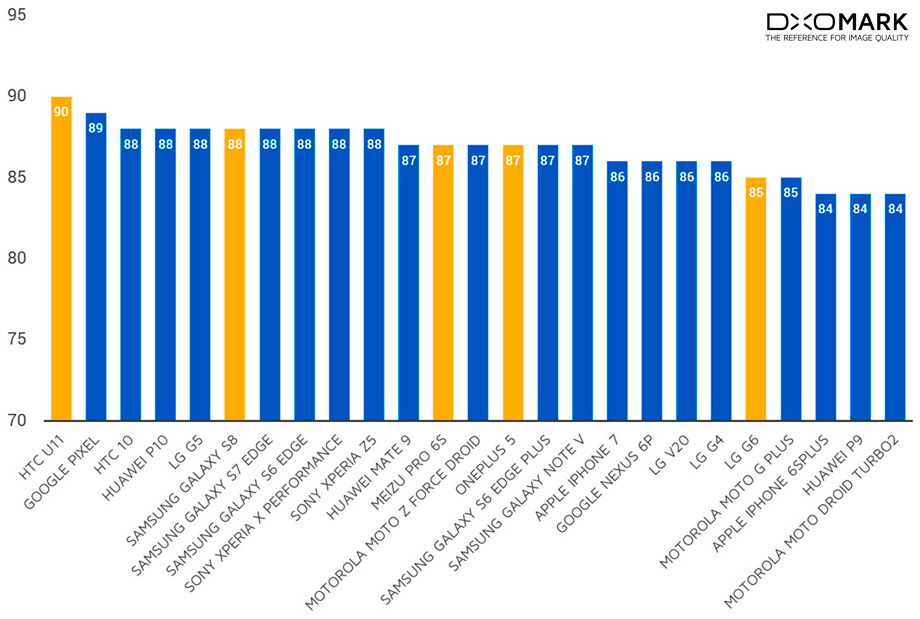

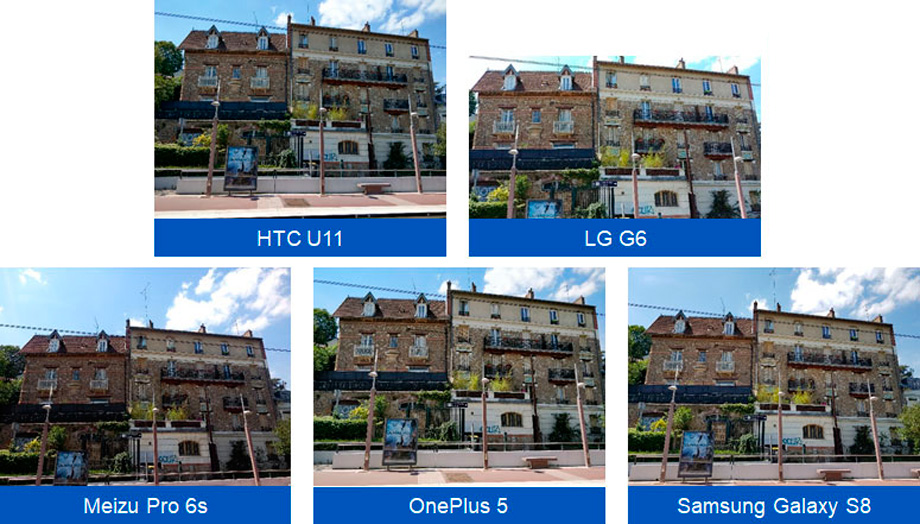


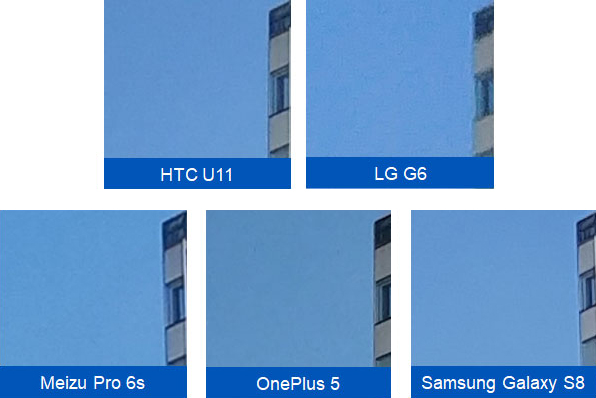



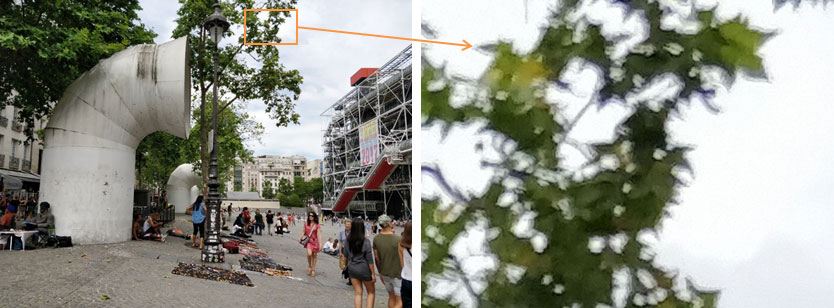


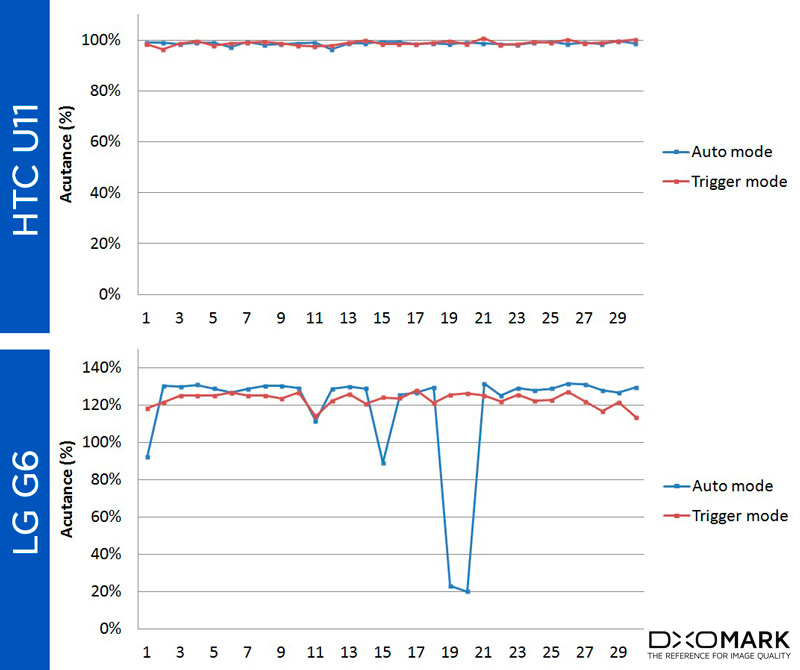
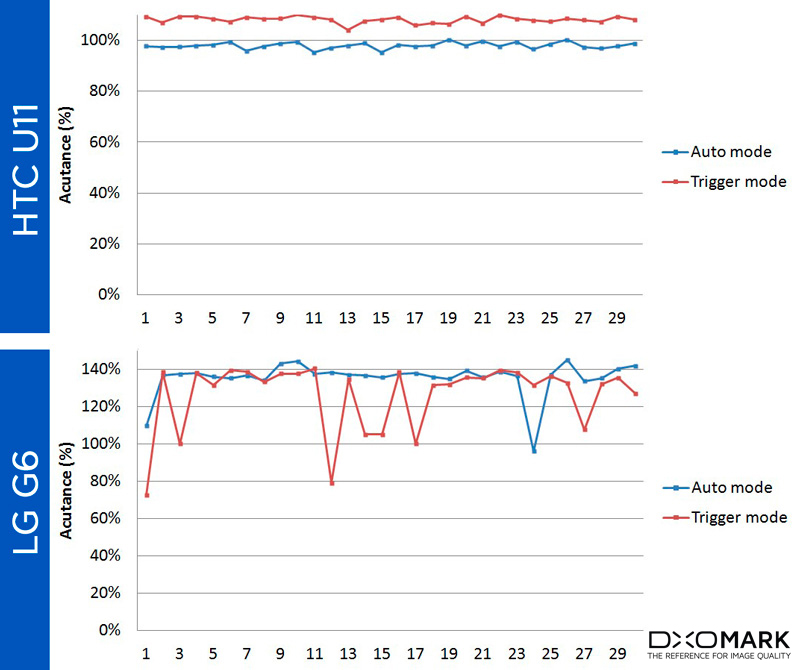

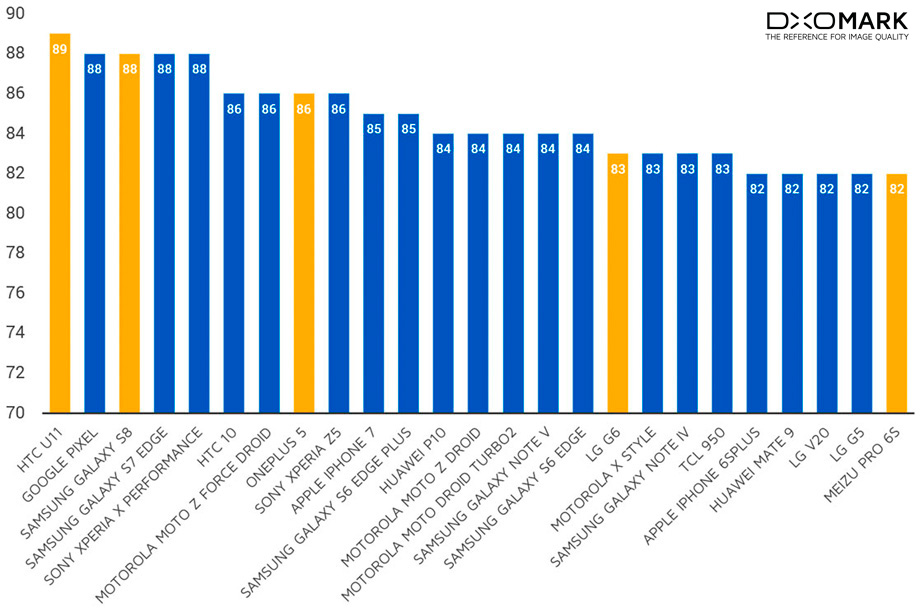

DXOMARK encourages its readers to share comments on the articles. To read or post comments, Disqus cookies are required. Change your Cookies Preferences and read more about our Comment Policy.